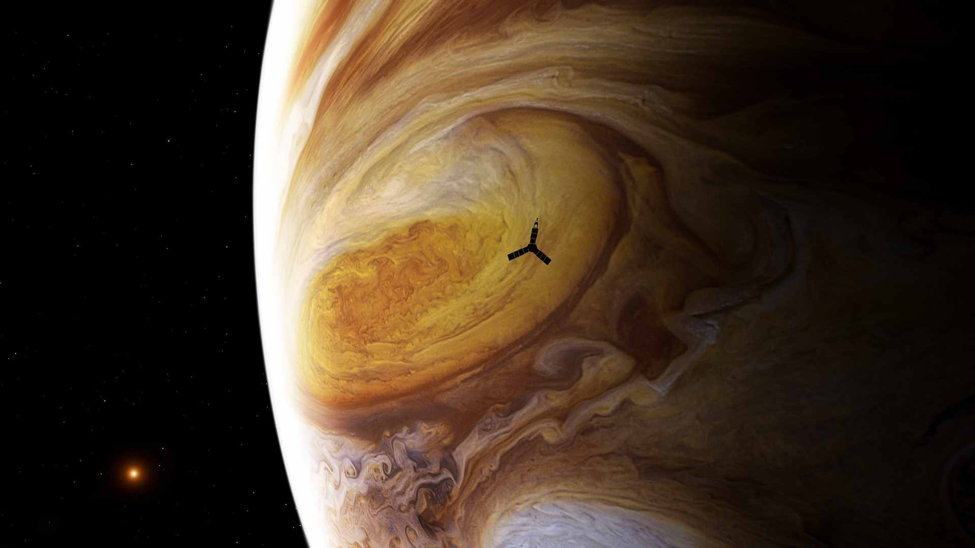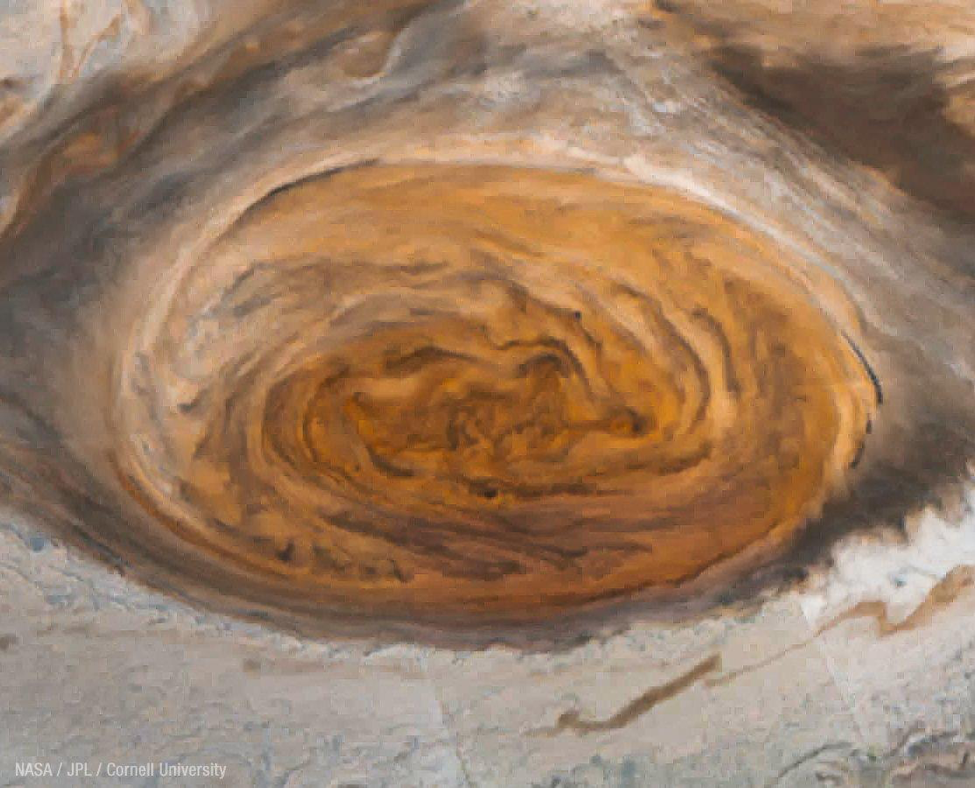
For the first time ever, scientists and researchers will be able to see, in detail, the enormous Great Red Spot first noticed on Jupiter in the 1600s but continuously observed since 1830. NASA’s Juno spacecraft launched in August of 2011 and just completed a flyby of the spot on July 10th. The spacecraft captured images of what’s actually a massive storm raging on the planet’s surface. That data is starting to be received by NASA.
The agency is encouraging citizen-scientists like Jason Major to process the raw images being beamed from the spacecraft.
Juno originally arrived at Jupiter on July 4th, 2016, and has since completed six orbits while conducting scientific investigations. On its sixth flyby, Juno came extremely close to the Great Red Spot that is about 10,000 miles wide and 1.3 times the size of Earth. Juno has logged over 71 million miles of travel around Jupiter.
“For generations people from all over the world and all walks of life have marveled over the Great Red Spot,” said the project’s principal investigator Scott Bolton in a statement. “Now we are finally going to see what this storm looks like up close and personal.”
The Juno spacecraft’s orbit came closest to Jupiter’s center on July 10th at 6:55 PM PT and was coasting about 2,200 miles above the planet’s clouds. Juno would end up about 5,600 miles above the Great Red Spot’s clouds about twelve minutes later. The winds beneath the cloud can reach up to 400 mph.
One of the clearest images of the Great Red Spot was taken on June 26th, 1996 by NASA’s Galileo spacecraft. NASA estimates that the storm has existed for over three centuries but appears to be shrinking. The Juno spacecraft will provide the most detailed images ever received of the storm along with an extraordinary amount of data. NASA says the storm used to be so large, you could fit Earth in it three times over.

NASA is updating this website with the raw images of the Great Red Spot as they come in from the Juno spacecraft.
Robin Seemangal has been reporting from the newsroom at NASA’s Kennedy Space Center for the last two years for the Observer with by-lines also in Popular Science and Wired Magazine. He does in-depth coverage of SpaceX launches as well as Elon Musk’s mission to send humans to Mars. Robin has appeared on BBC, Russia Today, NPR‘s ‘Are We There Yet’ Podcast, and radio stations around the world to discuss space exploration.

